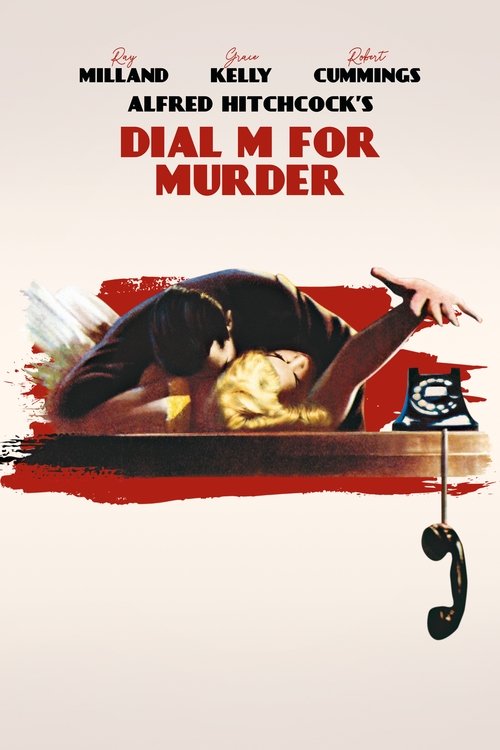
Title: Dial M for Murder
Year: 1954
Director: Alfred Hitchcock
Writer: Frederick Knott
Cast: Ray Milland (Tony Wendice),
Grace Kelly (Margot Wendice),
Robert Cummings (Mark Halliday),
John Williams (Chief Inspector Hubbard),
Anthony Dawson (Charles Swann),
Runtime: 105 min.
Synopsis: When American writer Mark Halliday visits the very married Margot Wendice in London, he unknowingly sets off a chain of blackmail and murder.
Rating: 8.018/10
A Taut Tapestry of Motive and Manipulation
/10
Posted on July 17, 2025
Alfred Hitchcock’s Dial M for Murder (1954) weaves a meticulous web of suspense, its genius lying in the interplay of a tightly crafted screenplay and the understated brilliance of its performances. Adapted from Frederick Knott’s stage play, the film transforms the constraints of its single-location setting a London flat into a masterclass in narrative economy. Hitchcock’s direction thrives in this claustrophobic space, where every glance, pause, and object placement becomes a thread in a tapestry of deception. The screenplay, also by Knott, is a marvel of precision, each line of dialogue a calculated step toward unraveling Tony Wendice’s (Ray Milland) chillingly methodical plot to murder his wife, Margot (Grace Kelly).
Ray Milland’s performance as Tony is the film’s dark heart. His urbane charm masks a predatory cunning, revealed in subtle shifts a tightened jaw, a calculated smile that betray his character’s moral decay. Grace Kelly, in her first major Hitchcock role, imbues Margot with a fragile yet resilient humanity, her poise cracking just enough to evoke empathy without melodrama. John Williams, as the dogged Inspector Hubbard, grounds the film with a quiet, almost Columbo-esque tenacity, his unassuming demeanor belying a razor-sharp mind. Their interplay elevates the film beyond a mere thriller, turning it into a study of human motives under pressure.
Cinematography, under Robert Burks, is deceptively simple yet profoundly effective. The flat’s muted palette browns, greens, and shadows creates a suffocating intimacy, while strategic camera angles, like the high shot during the attempted murder, amplify tension without breaking the stage-like containment. The use of 3D, though subtle by modern standards, adds a tactile unease, particularly in close-ups of objects like the fateful scissors. However, the film’s reliance on its theatrical origins occasionally stifles its visual dynamism; moments that might have soared with Hitchcock’s signature kinetic flair feel tethered to the stage’s static frame.
Dimitri Tiomkin’s score, while evocative, is sparingly used, allowing ambient sounds telephone rings, footsteps to carry the suspense. This restraint amplifies the film’s psychological weight, though one wonders if a bolder musical presence might have deepened the emotional stakes. Ultimately, Dial M for Murder is a testament to Hitchcock’s ability to transform limitation into innovation, crafting a thriller that lingers not for its spectacle but for its chilling exploration of betrayal and control.
0
0
